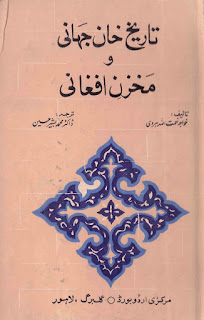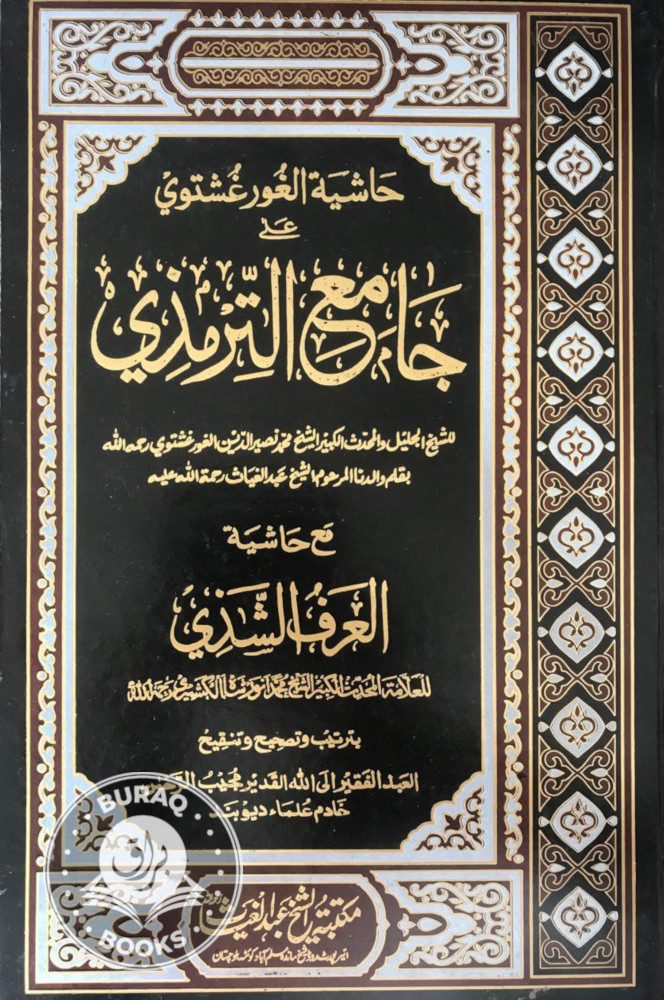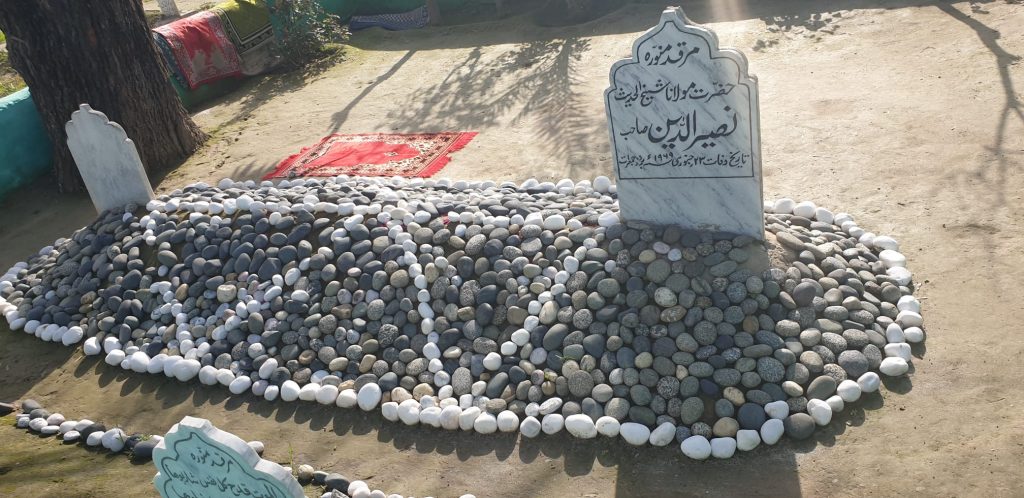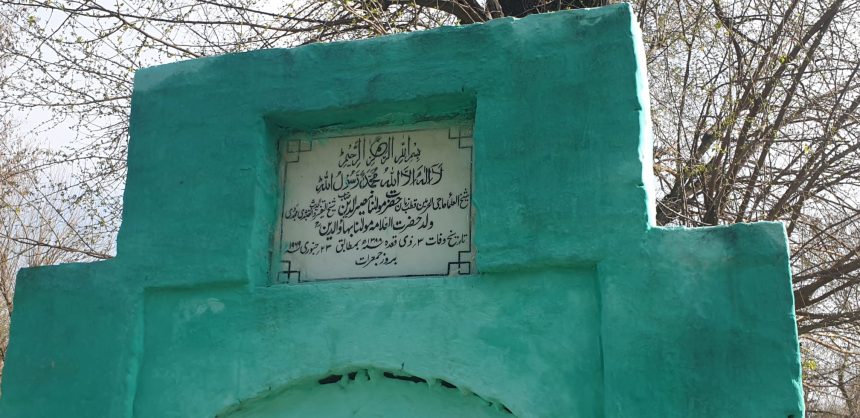كفاية الطالبين في حياة الشيخ نصير الدين
When I first heard of Hadhrat Ml Nasīruddīn Ghourghushtawi sāhib, I was astounded that a scholar of such high calibre was so close to home. Unaware of the scholars of Chach, discovering that such a great Shaykh al-Hadīth had previously blessed this region with his presence ignited a desire to research these greats. It dawned on me that although well acquianted with the names of erudites hailing from India, including Shaykh al-Hind, Ml Qāsim Nānotwi, Shaykh Thānwi, etc, we become oblivious to the hidden scholars that resided locally in Pakistan.
It was upon hearing Hadhrat Ml Nasīruddīn’s name, and his life works, that I decided to research him more. It is unfortunate and a great disservice to his legacy that he is relatively unknown amongst ‘ulamā beyond his name.
It is my desire that by collating my research the reader may draw benefit and inspiration from his life and remember him in their du’a. I urge the reader to bare patience; the lengthy detail was necessary to give justice to this illustrious personality.
Imām al-Muhaddithīn, Qutb al-Wāsilīn, Shāh Waliullah-i-Sarhad, Abu Dharr-i- Zamānah, Jāmi’ al-Ulūm al-Zāhir wal- Bātin, Ustād al-Asātidha, Umdat al-Fuqahā wal-Muhaddithīn Shaykh al-Hadīth Hadhrat Maulānā Nasīruddīn Ghourghushtawi sāhib; one would assume that these titles are mere exaggerations from fanatic disciples. However, the more I researched, I realised that these epithets are well-deserved.
Birth and Tribal Links
He was, Hadhrat Maulānā Nasīruddīn ibn Allāmah Bahā’uddīn ibn Maulānā Sa’d al-Dīn ibn Shaykh Muhammad Musa ibn Akhund Muhammad Bashārat. Born in the year 1877/78[1], in Ghourghusti, a small town of Chach in the Attock district in Pakistan, hence the demonym Ghourghushtawi.
Tribally, he was of the Kākar كاكڑ tribe which is a subtribe of the Pathān clan[2].
The migration to Ghourghushti dates back to the era of Sultan Mahmood Ghaznawi (year 1030GC / 461 Hijri) where some fighters from the Ghaznawid Empire in Southern Afghanistan, Qandahar, travelled to fight alongside Sultān Mahmood in Panīpat, Karnāl and also against the Hindu Shāhi army[3] near Hazro resulting in the Hindu army suffering a defeat. After this, the Qandāhari fighters decided not to return to their homeland and instead settled in Ghourghushti (and surrounding areas). Amongst those settlers were the great grandfathers of Maulānā Sa’d al-Dīn (the grandfather of Ml Nasīruddīn).
Brief History of Ghourghushti
Qais Abdur Rasheed[4], also known as, ‘The Father of the Pathāns’, had 4 sons, one of whom was named ‘Ghourghusht’. The name of the town Ghourghushti is used to refer to the Pashtūn sub-tribes that descended from Ghurghusht.
Ghourghusht himself had 3 sons; namely, Dānī, Bābī and Mandu. The Kākar tribe (which Ml Nasīruddīn belongs to) are the offspring of Dānī. It is said, althought not confirmed, that Ghourghusht was alive in approximately 388 Hijri.

Bani Isrā’īl
Although there was a brief mention of Pathān history, and I did not wish to veer off topic unnecessarily. I found a point mentioned by Hadhrat Maulānā which was quite pertinent to his biography.
The famous theory of the Bani Isra’il-Pashtūn connection is that the Pashtūn nation are descendants of the Bani Isrā’īl. The theory suggests that from the 10 exiled tribes of the Bani Isrā’īl, the children of Malak Afghana[5] were sent to exile in Ghor, Afghanistan.
Aside from passed down oral tradition, this theory can be traced back to the Era of the Mughal Emperor Jahangīr (1627). The book, Tarīkh-i-Khān Jahāni wa Makhzan-i-Afghāni[6] (The History of the Afghans). This was written by Ni’matullah Harawi[7] in the royal court of Jahangir. The earliest written source of this theory can be traced back to this book.
The veracity of this claim is disputed; nonetheless, its mention is merely in context of the below:
Hadhrat Maulānā Nasīruddīn Ghourghushtawi sahib mentions that on one occasion he was in great thought and doubt regarding this matter, are the Pathāns descendants of the Bani Isrā’īl or not? At night, he went to sleep with this question still on his mind. Hadhrat recalls that, “During the night, I saw the Prophet ﷺ come to me and say:-, انت رجل من بني اسرائيل.” (Translation: You are a man from the Bani Isrā’īl.)
And Allāh تعالى knows best.
Youth and Studies
Hadhrat Maulānā Nasīruddīn studied the foundational books under his brother Hadhrat Maulānā Shihābuddīn sahib who was a teacher of the Islamic sciences. He then went on to study Sarf and Nahw in various villages surrounding Attock as well as studying some higher level Arabic grammar books in Multan.
Upon completing these studies, Hadhrat Shaykh al-Hadith travelled to Chakrāla, Mia’nwāli to complete the final year of Hadith (Dawrah-i-Hadith) under Hadhrat Qādhī Qamaruddīn[8] sahib who was also a pious and accomplished scholar.
Upon completing the Dawrah Hadith under Ml Qamaruddīn sb, Hadhrat Maulānā Nasīruddīn sb travelled to Deoband and studied under the contemporary scholars of the time with Shaykh al-Hind Mahmūd Hasan Deobandi being one of them.

Hadhrat Maulānā Nasīruddīn sahib’s piety was known from his youth. It is narrated that he started praying tahajjud prayer with his father from age 13 and that this habit remained with him until he passed away.
During his studies he would also stay firm upon doing motāl’a[9]. Hadhrat Ml Nasīruddīn sb mentions that they would do motāl’a at night, and in the absence of light they would go out and study under the moonlit sky. If he ever felt like tiredness would overtake him, he would sit upon a large rock and read so the fear of falling off would keep him awake. Some nights, the entire night would pass in this state.
Teaching and Travels
Upon completion of his studies, Hadhrat Maulānā Nasīruddīn sb returned to his town Ghourghusht and started teaching in the masjid opened by his grandfather, known as ‘Kajhoor wali Masjid’. Here, he taught the elementary books of Sarf, Nahw and Ma’ani etc. After some time, Hadhrat sahib travelled to Rangoon, Burma and taught there for a few years.
Whilst in Rangoon, Hadhrat sahib amassed some debt. Upon fulfilling the debt, he made intention for Hajj and set off to the house of Allah. At that time, from Rangoon, the cost of Hajj was 300 rupees. This Hajj, was during the era of the Ottoman control over Hijaz, under the caliphate of Sultan Abdul Hamid II. This Hajj tookplace before 1914, whilst the flames of World War One were still being kindled. The Russian Muslims at the time were fleeing to Hijaz and surrounding areas.
Upon the completion of Hajj, Hadhrat sahib stayed in the Hijaz region. He met with the scholars of Madinah Munawwarah at the time; upon realising who he was, they made him a teacher in Masjid al-Nabawi. Hadhrat sahib also taught in Makkah Mukarramah for some time. His initial intention was to remain in Makkah and not return, but Allah تعالى had other plans of taking Khidmah (service of deen) from him.
His heart wasn’t at rest in Makkah, uneasy, he decided that he needed to return to his hometown of Ghourghushti. The reasons for this move being, his illness at the time and his elderly mother whom he wished to be in the service of in Ghourghushti.
Maulānā Nasīruddīn sb returned to Ghourghushti but his heart was in sorrow. Hadhrat, at the time, could not understand why his heart could not find rest in the blessed Haramain.
Alas! He was not aware of what Allah تعالى had in store for him.

The Service of Hadith in Ghourghushti
In those days, the tradition of narrating and teaching Hadith was not found in Ghourghushti. Islamic lessons consisted mainly of lessons of Fiqh, Tafseer, Mantiq and Philosophy.
When Hadhrat Shaykh al-Hadīth sahib started lessons of Hadith in the Kajhoor wali Masjid in Ghourghusht, it attracted many students from all over. Approximately 60 to 150 students would sit in his lessons, which were conducted in Pushto[10] and Farsi. This attracted students from the Afghan region and surrounding areas (Swat, KPK etc.).
From amongst the accolades of Hadhrat Maulānā, is, ‘Shah Waliullah-i-Sarhad’ or ‘Musnid-i-Sarhad’. He became famous as the ‘Shah Waliullah’ for the Sarhad region. One can acknowledge that this is a considerably weighty title to possess.
As Hadhrat Shāh Waliullah Muhaddith Dehlwi introduced the Hadith science to Hind (India), and he is the common narrator in all Indian chains of narration, similarly Hadhrat Shaykh al-Hadith sahib introduced the Hadith narrating tradition to Afghanistan and the Sarhad region. This is why, upon investigating, one will find that the common narrator in the Asānīd (chains) of the ‘ulamā of Afghanistan is none other than Hadhrat Maulānā Nasīruddīn Ghourghushtawi Sahib.
This writer was honoured to visit the grave of Hadhrat Ml Nasīruddīn sb in Ghourghushti in 2020. Buried alongside him is his son, Maulānā Ibrahim sahib (passed away in 2017) and a few other relatives. Whilst at the grave, an elderly, a weary-looking foreign traveller approached the grave and started to make du’ā quietly. His shoes were torn and his clothes were dusty and dishevelled. I asked him where he came from and who he was. He didn’t understand my Hindko nor my Urdu and only replied to me in Arabic. After conversing with him, I found out that he had travelled all the way from Kabul to visit the grave of the Ustādh of his Ustādh in Kabul, Hadhrat Maulānā Nasīruddīn sahib.
I was astonished that this elderly, poor, humble traveller, out of love for ‘ilm and ‘ulama- traveresed the lengthy distance from Kabul to Ghourghushti simply to make du’ā for this great Shaykh.

Sacrifice and Efforts for Ahādīth
Hadhrat Shaykh al-Hadīth sahib carried out the service of teaching Hadīth in Ghourghushti for approximately half a century. Hadhrat himself mentions in a conversation between him and Hadhrat Maulānā Ghulāmullah Khān sb that he had been teaching Hadith for a period of 70 years!
Not only did he spent his entire life teaching hadīth, Hadhrat sahib also mentions that for all those years of teaching, he did not accept a single penny in wage or stipend. He would often find himself in debt, thereafter, he would make du’ā to Allah and from the unseen Allah would fulfil all his needs and take care of his affairs.
In the introduction, I mentioned that one of his titles were ‘Abu Dharr-i-Zamāna’ (The Abu Dharr of his Era). For those that are aware of the story of the companion Hadhrat Abu Dharr رضي الله عنه , his zuhd should be enough evidence that Hadhrat Maulānā sahib was deserving of this title.
On one occasion, Hadhrat sahib was teaching Hadīth to his students. News came from his household that his son had just passed away. But the lesson did not stop there, Hadhrat Maulānā carried on teaching until the lesson had finished and then he ordered his students “prepare the Janazah”. Confused, the students enquired of the janāzah they wereto prepare. Hadhrat replied “my son has passed away”. This level of love for the ahādīth, love for the students and the endeavour to fulfil their rights is found only in gems amongst men, where separating from the Hadīth of the beloved Prophet Muhammad ﷺ was more difficult to bear than even the passing of their child!
Masha’ikh
From amongst his teachers are:
- Hadhrat Ml Shihābuddīn (Elder brother)
- Hadhrat Ml Gul Kākā (Elder Brother)
- Hadhrat Ml Qutbuddīn Ghourghushtawi (Nephew(son of Ml Shihabuddin))
- Hadhrat Ml Qamaruddīn Chakrālwi
- Shaykh al-Hind Ml Mahmūd Hasan Deobandi
- Hadhrat Maulānā Ghulām Rasool Ranjha
- Imam al-Mufassirīn Hadhrat Ml Hussain Ali
Spirituality
In Tasawwuf, Hadhrat Maulānā was a Khalifa (spiritual successor) of Hadhrat Maulānā Hussain Ali[11] sahib in the ‘āliyyah siddiquiyyah Naqshbandi mujaddidi order.
He took from Hadhrat Ml Hussain Ali, who took from Khawājā Sirājuddīn, who took from his father Khawājā Muhammad Usman, who took from Haji Dost Muhammad Qandahāri, who took from Shah Abu Sa’eed. (Rahimahumullah)[12].
It was the practise of Hadhrat sahib that he would sit in murāqabah (meditation) after Fajr salāh. Hadhrat was also very punctual with praying tahajjud. In ‘ibādah, Hadhrat would ensure that everything he did was in accordance with the Sunnah.
Spiritual Status
Those who knew and spent time with Hadhrat Maulānā Nasīruddīn sb would attest to this fact that Hadhrat was the Jāmi’ al-‘Ilm al-Zāhir wal-Bātin. He had attained high ranks in both the knowledge of the apparent and hidden sciences. His level of piety, asceticism and taqwa was dissimilar to his peers.
To encapsulate each incident relating to the spiritual status of Hadhrat Maulānā would render this article a short book. However we shall suffice with the following few examples:
Hadhrat Maulānā Nūrul Haq sahib, who was a student and mureed of Hadhrat Nasīruddīn sb, narrates a dream of his,:
“On one occasion I saw our beloved Nabi ﷺ in a dream and he came along with our mother Hadhrat Aisha رضی اللہ عنھا. On the other side, Hadhrat Maulānā Nasīruddīn sahib was sitting. The Prophet ﷺ pointed towards Hadhrat Ghourghushtawi whilst speaking to Hadhrat Aisha رضی اللہ عنھا. and said هذا محدث هذا العصر “This is the Muhaddith of this era.””
یہ تھے ہمارے اکابر
On another occasion, Hadhrat ‘Ārif Billah, Maulānā Abdus Salām[13] mentions:
“Once, on a Thursday night, I saw our beloved Nabi ﷺ in a dream, and the Prophet ﷺ said “Tomorrow, whoever prays Jumu’ah behind Shaykh al-Hadith Ghurghushtawi, Allah will forgive them.” That morning, I immediately left my village Peer sabaq. In those days, a bus would travel to Rawalpindi from Nowshehra and the journey was long. From there (Rawalpindi), I caught a bus to Hattiya’n and from there to Hazro. I reached Ghourghushti whilst the Khutbah was taking place and by the grace of Allah, I was allowed to take part in this blessed Jumu’ah behind Maulānā Ghourghushtwi.”
On one occasion, Hadhrat Maulānā Nasīruddīn sahib did not come out of his Khalwat Khana[14] to come and teach his lesson. After some time, the students prompted one from amongst them to go and ask Hadhrat why he did not come to teach. The student asked once, but received no reply. He asked again, but received no reply. On the third time he asked, Hadhrat responded and said “I will not be teaching today, I am experiencing a particular state due to which I am unable to teach.”
He further told the student, “Yesterday, a thought crossed my mind, am I teaching and conducting my lessons for the pleasure of Allah or not? Then last night, I saw Allah تعالى in my dream and Allah said “O’ old man! You are teaching for My pleasure”. Due to the effect of this speech of Allah and His جلال I am experiencing this state and for this reason, I cannot teach you.”
Finally, Hadhrat Maulānā Nasīruddīn sahib narrated once in a gathering in Darul Uloom Rahmāniyyah, Tehkāl upon the insistence of his hosts, “I had once written a short treatise on the topic of Tauheed. Then one night, I saw a dream that two angels approached me and said “come with us, you have been summoned by Allah!” They took me into the court of Allah and Allah asked me “Nasīruddīn! is it you who has written this risālah about my Tauheed?” I immediately got frightened in case I had made an error. In this state of fear I replied “Ji han (yes) I have written it” upon which Allah replied “Fine, through the blessings of this risālah I have forgiven everything of yours.”
Similarly, there are many incidents and dreams I can relate, but this shall suffice.
Passing Away
On the 15th of January 1969, Hadhrat Maulānā Nasīruddīn sahib started to make preparations for Hajj. He was approximately 91 years of age at this point. A few years prior to this, Hadhrat had put an end to his 70 year long career of teaching hadith, due to weakness and old age. However, on the morning of the 15th, after Fajr salah at the time of Ishraq, Hadhrat Maulānā sahib fell ill.
He was taken to Wah Factory Hospital P.O.F. where he was treated for 6 days- but to no avail. In and out of consciousness, he would wake occasionally and pray salah. After praying salah he would fall unconscious once again. His son, Hadhrat Ml Ibrahim sb, narrates: we heard Hadhrat sahib uttering some words under his breath. Upon going closer, I understood he was saying مرحبا يا حبيبي مرحبا يا حبيبي “welcome my beloved, welcome my beloved”.
Hadhrat’s son also mentioned: “In order to take his mind off things, I decided to ask Hadhrat a hadith related question. So I asked him, “Hadhrat, in the Hadith of Abdullah bin Mas’ood, where he recited Qur’an to the prophet ﷺ, upon reaching the ayah (Surah Nisā:41), why did RasūlAllah ﷺ say حسبك الآن and not “stop now” ?”
Hadhrat replied, “The reason RasūlAllah ﷺ didn’t say “stop now” was because this was the speech of the King and out of respect and reverence the Prophet ﷺ said حسبك الآن”.
Repeating these words, Hadhrat slipped back out of consciousness and like this, the gnostic, the lover of RasūlAllah ﷺ started the journey of the ākhirah and met with his True Master. The hadith book of this Muhaddith had closed.
إنا لله وإنا إليه راجعون
Janāzah
Word had spread throughout Pakistan and Afghanistan like wildfire. The mountain of knowledge stands no longer. Shaykh al-Qur’ān Maulānā Ghulamullah Khan arranged for cars to be driven around the villages with loudspeakers announcing the departure. These cars reached as far as Chach, Hasanabdāl and Taxila. Newspapers were published and phone calls were being made all around Pakistan with the same message.
It is said regarding Hadhrat Maulānā Ghaus Hazarwi, that he experienced such great sorrow upon receiving this news that pens cannot describe the state!
From all over Pakistan, students of knowledge, ‘ulamā and lovers of Hadhrat poured in to Ghourghushti to take part in what may have been the largest Janāzah in its history. The people of Ghourghushti met the travellers with great service, the guests were fed for free and the taxi-ing services to and around Ghourghushti were free of charge.
It is estimated that one hundred thousand people attended this Janāzah. Hadhrat Maulānā was buried, and Shaykh al-Hadith Maulānā Abdul Haq, Akora Khattak, delivered a speech by the graveside along with Hadhrat Maulānā Bādshāh Gul[15] and Shaykh al-Qur’ān Hadhrat Maulānā Ghulamullah Khan Sahib.
And on this note we conclude this chapter.[16]
May Allah enlighten the grave of Hadhrat sahib May Allah elevate his ranks in Jannah alongside the Prophet Muhammad ﷺ and may Allah grant him further acceptance throughout.

[Maulānā] Hanzala Khan | Bradford
14 Dhul Qa’dah 1444 | 3rd June 2023
[1] The exact date of birth is unfound, however the year of birth was deduced via calculation. His Father Ml Bahā’uddīn is recorded to have passed away in the year 1891 and Ml Nasīruddīn mentions his age being 14 at that time. Therefore coming to the conclusion of him being born in 1877/78. The book موسوعة علماء الديوبند has also recorded it as 1878.
[2] Kākars typically settled in Ghourghushti but were originally from Kakaristan which is currently a part of Balochistan. They are one of the largest Pashtūn tribes in Ghourghushti and speak the Kākari dialect of Pushto.
[3] Also see The Battle of Chach.
[4] Qais Abdur Rasheed is the legendary ancestor/progenitor of the Pathāns. It is said that he is the 37th descendent of King Talut (Saul) (who is mentioned in the Qur’an) and lived in and around the year 600bc. Some historians also mention that he and his tribe accepted Islam upon the invitation of Khalid ibn Waleed رضي الله عنه after He introduced Qais and called him to the gathering of the Prophet ﷺ However, him being a Sahabi is something contested. Neither is there any narration citing this incident nor is his name found in the books gathering the names of the Sahābah. It is highly likely that due to the bias of historians, this (Qais being a Sahabi and this story) is a fabrication. The story of his Islām was narrated by historian Mountstuart Elphinstone. Much of the historical accounts surrounding Qais are lore and tales with very little verified fact. It is said that he was buried upon Takht-i-Sulaiman with his ancestor Malak Afghāna.
[5] Malak Afghana is said to be the grandchild of Tālūt (Saul) and was in the care of Prophet Dāwūd عليه السلام and later Prophet Sulaimān عليه السلام.
[6] Makhzan-i-Afghāni is a book covering the history of the Afghans. Part fictional and part factual, it is a widely accepted work amongst historians.
[7] Ni’matullah Harawi was a 17th century historian in the court of Jahangir. He initially wrote Makhzan-i-Afghāni in Persian.
[8] Hadhrat Ml Qamaruddīn sahib was a student of the great scholar Maulānā Ahmad Ali Sahāranpuri sahib. The word Qādhī is not representative of the Islamic judge status, rather his lineal attribution.
[9] Motāl’a refers to studying the lesson prior to it taking place as a student or is also used for reading in general.
[10] Pushto/Pashto was the original language of the Pathān tribes of Ghourghushti. The Hindko language spoken in modern day Ghourghushti came later.
[11] Maulānā Hussain Ali sahib was a great friend of Allah who was also the Shaykh of the likes of Hadhrat Ml Abdullah Darkhasti and Hadhrat Maulānā Sarfaraz Khan Safdar.
[12] For the complete chain, see Tajalliyat e Ghourghushtawi pg 173.
[13] He was the son of Maulānā Nūrul Haq mentioned in the example above from the village Peer Sibaq
[14] Khalwat Khāna is a sufi term for a small room which is used for meditation and ‘ibādah.
[15] The principle of Jāmi’a Islāmiyyah, Akora Khattak
[16] Sources:
a. تجليات غورغشتوي , Mufti Qasim Bijlighar, Maktabah Mawlana Bijlighar
b. The Pathans, Olaf Caroe, Macmillan & Co. ltd.
Also see,
- تاريخ خان حهاني ومخزن أفغاني
- مجالس غورغشتوي, Mufti Qasim Bijlighar, Maktabah Mawlana Bijlighar
The majority of this write up was taken from Tajaliyyāt e Ghourghushtawi. It was a biographical work written by Maulānā Bijlighar who was a close student of Hadhrat Maulānā Nasīruddīn sahib with the help of the son of Hadhrat sahib, Maulānā Ibrahim and other family members. To read more about the life of Hadhrat I would guide seekers to purchasing that book along with Majālis-i-Ghourghushtawi as mentioned above. Due to the book not being readily available in British Islamic bookstores I decided to benefit the larger community by sharing what was written from my personal copy.


Leave a Reply